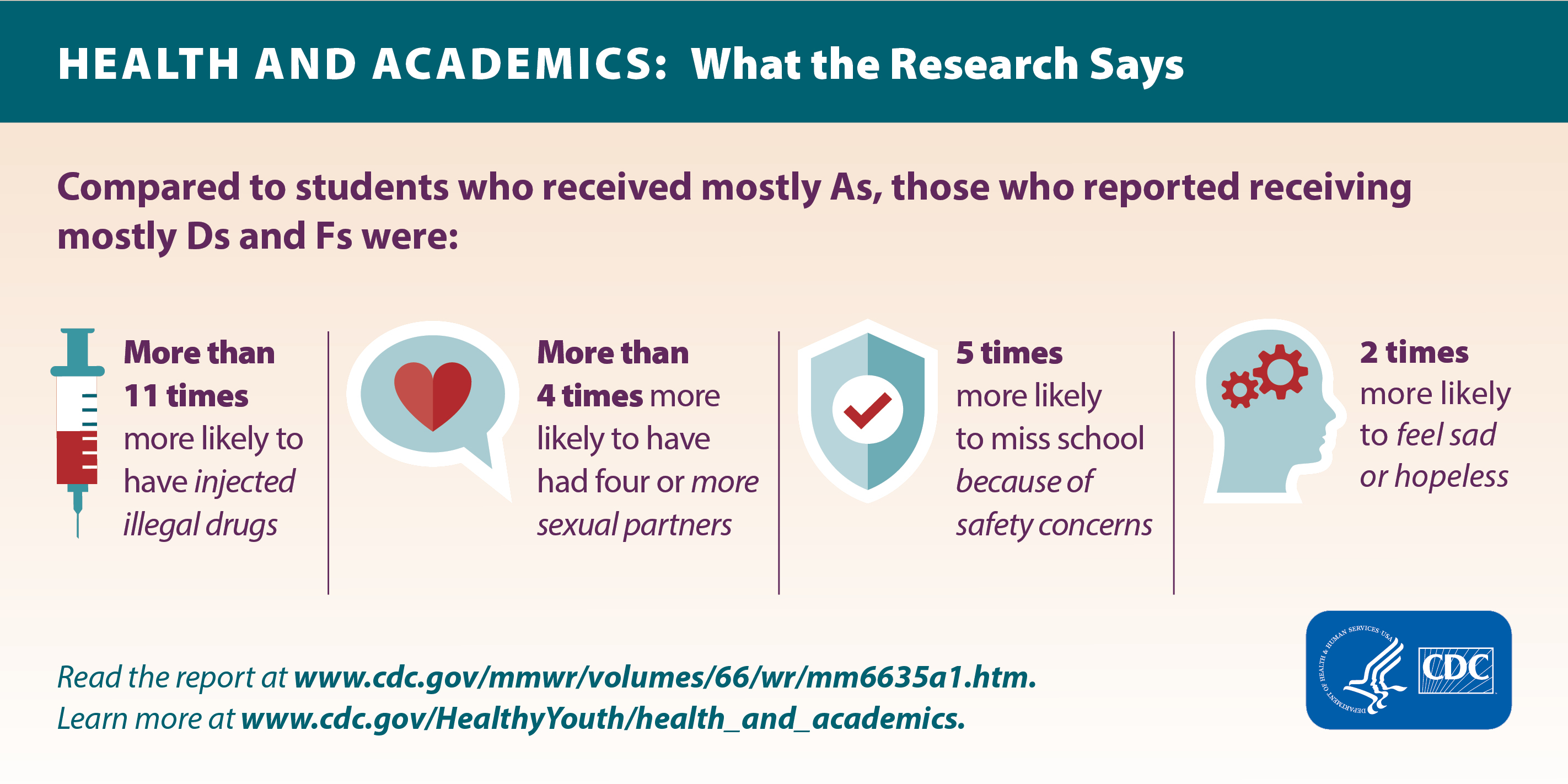
Why Schools?
The healthy development of children and adolescents is influenced by many societal institutions. After the family, the school is the primary institution responsible for the development of young people in the United States.

- Schools have direct contact with more than 95 percent of our nation’s young people aged 5–17 years, for about 6 hours a day, and for up to 13 critical years of their social, psychological, physical, and intellectual development.
- Schools play an important role in improving students’ health and social outcomes, as well as promoting academic success.
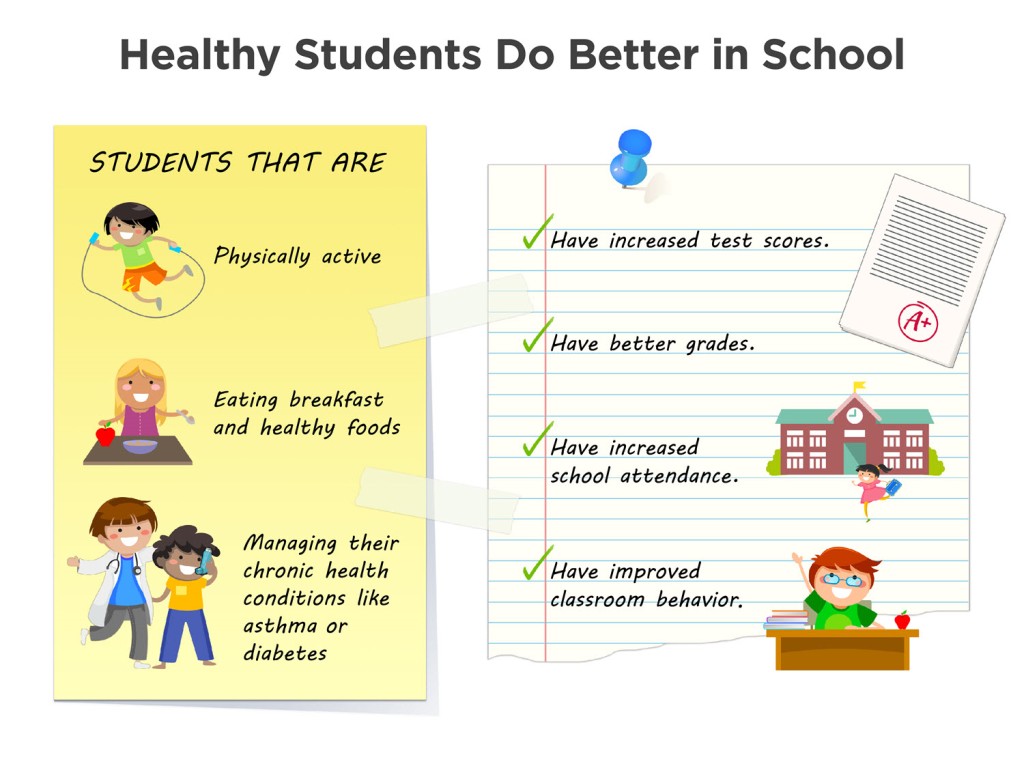
Why Student Well-Being?
The health of young people is strongly linked to their academic success, and the academic success of youth is strongly linked with their health. Thus, helping students stay healthy is a fundamental part of the mission of schools. After all, schools cannot achieve their primary mission of education if students and staff are not healthy.
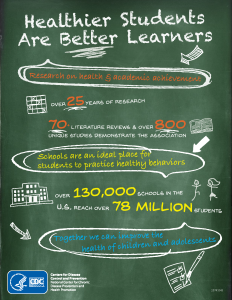
- Health-related factors, such as hunger, chronic illness, or physical and emotional abuse, can lead to poor school performance.1
- Health-risk behaviors such as substance use, violence, and physical inactivity are consistently linked to academic failure and often affect students’ school attendance, grades, test scores, and ability to pay attention in class.2-4
The good news is that school health programs and policies may be one of the most efficient means to prevent or reduce risk behaviors and prevent serious health problems among students.5 Effective school health policies and programs may also help close the educational achievement gap.6
Why the Whole School, Whole Community, Whole Child (WSCC) Model?
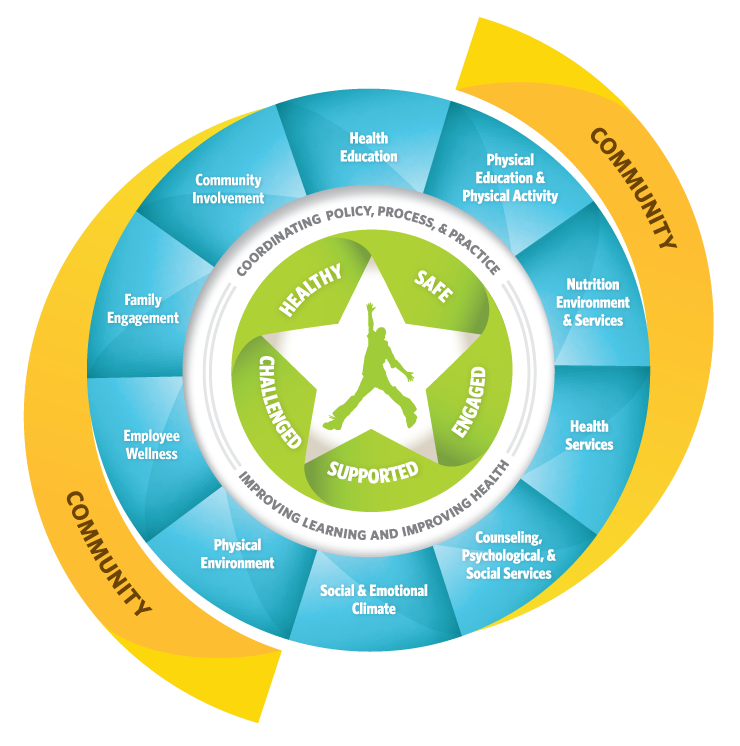
School health programs and policies in the United States have resulted, in large part, from a wide variety of federal, state and local mandates, regulations, initiatives, and funding streams. The result, in many schools, is a “patchwork” of policies and programs with differing standards, requirements, and populations to be served. In addition, the professionals who oversee the different pieces of the patchwork come from multiple disciplines: education, nursing, social work, psychology, nutrition, and school administration, each bringing specialized expertise, training, and approaches.
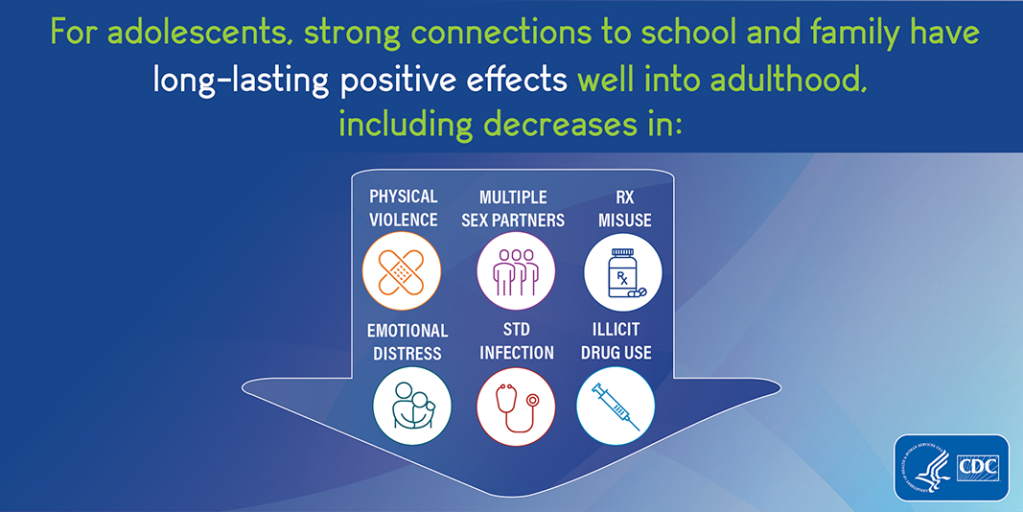
Coordinating the many parts of school health into a systematic approach can enable schools to:
- Eliminate gaps and reduce redundancies across the many initiatives and funding streams
- Build partnerships and teamwork among school health and education professionals in the school
- Build collaboration and enhance communication among public health, school health, and other education and health professionals in the community
- Focus efforts on helping students engage in protective, health-enhancing behaviors and avoid risk behaviors
Read more about the Whole School, Whole Community, Whole Child Model.
The Whole School, Whole Community, Whole Child (WSCC) Model includes the following coordinated components:
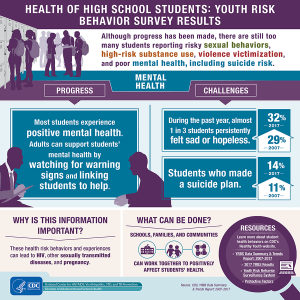
- Health Education
- Physical Education & Physical Activity
- Health Services
- Nutrition Environment & Services
- Counseling, Psychological & Social Services
- Social & Emotional School Climate
- Employee Wellness
- Physical Environment
- Community Involvement
- Family Engagement
Resources
- Journal of School Health: Healthier Students Are Better Learners: A Missing Link in School Reforms to Close the Achievement Gap (October 2011)
- CDC: Health-Related Behaviors and Academic Achievement Among High School Students (September 2017)
- Michigan Safe and Supportive Schools Data (2015)
- Critical Connections: Health and Academics (Journal of School Health, Nov. 2015)
- CDC: Health and Academic Achievement (May 2014)
- CDC: Health and Academics Page
- The Learning Connection: The Value of Improving Nutrition and Physical Activity in Our Schools (2013)
- CA Department of Education: Student Health, Supportive Schools, and Academic Success (2005)
- Two-year, Two-state evaluation study results prove Michigan Model for Health works (2012)

About Us

We are mishca, a non-profit made up of local experts on the Whole Child (the WSCC Model).
michiganshca@gmail.com
